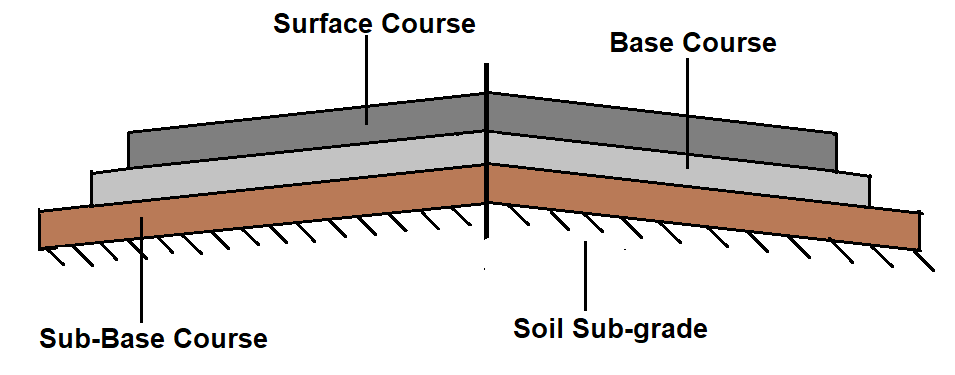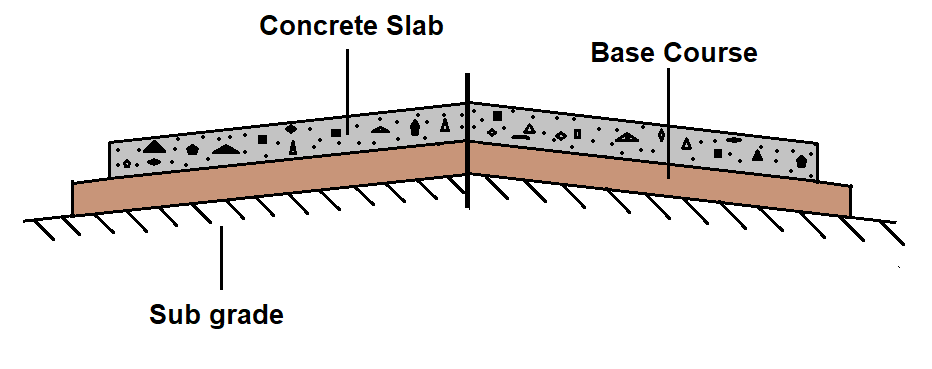Types of Road Pavements
Types of road pavement: The road pavements are mainly classified into two types:
- Flexible Pavement
- Rigid Pavement
Another two types of road pavement are becoming popular at present times, they are:
3. Semi-rigid Pavement
4. Interlocking Cement Concrete Block Pavement
1. Flexible pavements
Flexible pavement, as the name suggests they are flexible in nature under the action of loads. It has a low or negligible flexural strength.
The layer of flexible pavement may reflect both the non-recoverable and recoverable deformations of the lower layers including the subgrade onto the upper layers and also to the pavement surface.
When the lower layer of the pavement or soil subgrade is deformed or undulated, due to permanent deformation, the flexible pavement layers and pavement surface may get undulated to somewhat similar pattern.
In the case of flexible pavement, the vertical compressive stress is maximum on the pavement surface directly under the traffic load. The vertical compressive load of traffic is transmitted to a large area into the lower layers by grain-to-grain transfer.
Cross Section of Flexible Pavement
A typical flexible pavement consists of four components:
- Sub-grade
- Sub-base Course
- Base Course
- Surface Course
A typical Cross Section of flexible pavement is shown in the figure below:

Read in Details Here: Component Parts Of Flexible and Rigid Road Pavements Structure and Their Function
2. Rigid Pavements
Rigid pavements, as the name suggests, they are rigid in nature under bending action. It has very high flexural strength or flexural rigidity.
In the case of rigid pavement, the concrete slab is constructed over the subgrade or a base course which is made up of some stabilizing materials. The rigid pavements or say cement concrete pavement is generally made of Portland cement concrete.
In rigid pavements, the stress is not transferred to the lower layers by grain-to-grain transfer as in the case of flexible pavement layers. It has the capability to transmit the traffic load stresses through a much wider area below the pavement.
Rigid pavement is usually built as plain concrete with dowel bars. Sometimes wire-mesh reinforcements are used to hold the cracked portion together.
Cross Section of Rigid Pavement
A typical Rigid pavement consists of three components:
- Sub Grade
- Base Course
- Cement Concrete Slab
A typical cross Section of a rigid pavement is shown in the figure below:

4. Interlocking Cement Concrete Block Pavement
Interlocking cement concrete block pavement is another type of road pavement that consists of a layer of cement concrete paver blocks. The shape, size, and strength of this block layer are specified.
Generally, these blocks are laid over the soil subgrade which is well-compacted. These blocks may be laid over the sub-base or base course or layer of sand bed.
The gap between two successive paver blocks is filled with joint filling sands and the vibration is implemented to provide a proper interlocking between the blocks. Adequate lateral confinement or support has to be assured by providing a suitable edge strip or beam or kerb at the end of the paved area.
Read More: